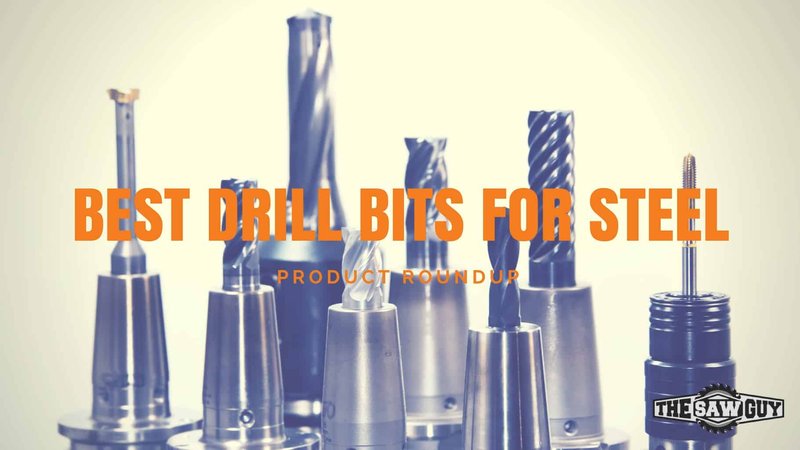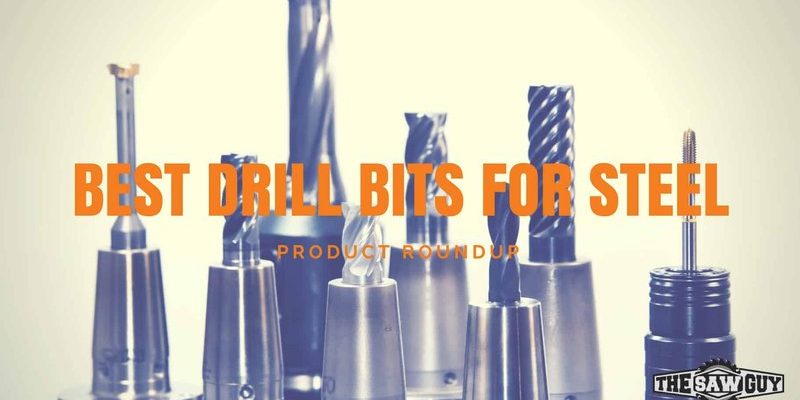
Here’s the thing: not all drill bits are up for this job. Sure, the basic drill bit kit you picked up for assembling furniture is great for particleboard and pine. But steel doors are a different beast. Imagine trying to cut steak with a butter knife—that’s what it’s like using a regular bit on steel. Brands like DEWALT, Milwaukee, and Bosch each offer their take on the perfect bit for tough jobs like this, making the decision feel a little overwhelming. Let me walk you through what actually works, why it matters, and how to avoid those rookie mistakes that leave you with a broken bit or a scratched-up door.
Why You Need Specialized Drill Bits for Steel Doors
Steel isn’t just another building material—it’s meant to take a punch. If you try to use standard twist bits or wood bits, you’ll quickly run into trouble. The friction from drilling heats up those softer bits fast, dulling them in minutes and maybe even snapping them. That’s not just frustrating; you risk damaging both your door and your drill. There’s a reason pros swear by drill bits made just for metal.
Specialized drill bits for steel doors aren’t just sharper—they’re harder, often made from materials like cobalt or coated in titanium. This means they can cut through dense metal without losing their edge. Some even have split-point tips, which help prevent the bit from wandering across the slick surface of the steel as you start your hole. When you’re aiming for a dead-center hole for hardware like a deadbolt or keypad lock, this extra bit of control is worth its weight in gold.
You might be wondering if generic “all-purpose” bits are good enough. Honestly, they might work for thin, soft metals—but a standard residential steel door demands more. Investing in the right bit now saves headaches, prevents damage, and keeps your hardware installs looking sharp (literally and figuratively).
Types of Drill Bits That Actually Work for Steel Doors
Let’s break down the main types you’ll see in hardware aisles or online. Each has its pros and cons, but all are leagues ahead of standard drill bits when it comes to steel doors.
- Cobalt Drill Bits: These are the MVPs for most DIYers. Cobalt (not just coated, but mixed into the alloy) stays sharp longer and stands up to repeated heat cycles. They’re great for punching through everything from entry doors to thick steel plates.
- Titanium-Coated Drill Bits: These are usually high-speed steel bits that get a titanium nitride coating. This not only makes them last longer than normal bits, but also lets them cut a bit faster and cooler. A solid pick for thinner steel doors.
- Carbide-Tipped Drill Bits: If you’re dealing with heavy-duty security doors or commercial-grade steel, carbide tips offer the ultimate hardness. They’re pricier and a little brittle (drop one and you’ll hear that sad little “snap”), but they’ll breeze through really tough metal.
- Step Drill Bits: These look kind of odd, like little cones with steps. They’re perfect when you need larger, perfectly round holes for something like a lockset or smart deadbolt. Just make sure you get one rated for steel—not all of them are!
For most home projects, cobalt drill bits (look for DEWALT or Milwaukee for reliable options) are the sweet spot between price and performance. If it’s a one-time install, titanium-coated works too. For anything heavy duty, reach for carbide.
What Size Drill Bit Do You Need For Door Hardware?
Picking the right drill bit size can feel like a guessing game, but it makes all the difference. The manufacturer of your new hardware—say, a Schlage deadbolt or a Yale smart lock—will usually include a template or a chart with exact hole sizes needed. Ignore this at your peril! A hole that’s too small makes for a frustrating install, while a hole too wide can leave things wobbly or insecure.
Here’s a general example:
- Standard deadbolts typically call for a 2-1/8″ hole for the lock body and a 1″ hole for the latch.
- Levers or knob sets are usually similar, but always check the instructions just in case.
- If you’re installing something like a keypad or electronic lock, you might need extra holes for wires or mounting plates.
Let me explain: drilling large holes through steel is best done with a hole saw attachment made for metal. The pilot bit in the center keeps everything steady, while the saw teeth chew through the steel. For smaller holes (like latch plates and screws), stick with cobalt or titanium drill bits in the size recommended by your hardware kit.
Don’t eyeball it. Measuring twice and drilling once is the motto—especially when a steel door leaves zero room for error.
How to Drill Through a Steel Door Without Ruining Anything
A lot of people rush this part, eager to get the new lock on and move on with their day. But drilling through steel needs a little finesse. Here’s how I’d do it, step by step.
Pro tip: Go slow, use a steady hand, and let the bit do the work. Forcing it is a shortcut to disaster.
- Mark your spot: Use painter’s tape to mark the center of your hole. This helps prevent the drill bit from skating and protects the paint.
- Pilot hole first: Start with a smaller bit (like 1/8″) to make a guide hole. This gives your larger bit or hole saw a place to grab and reduces wandering.
- Lubricate: Dab a bit of oil on the spot. It keeps the bit cool and helps prevent smoking or dulling.
- Drill slowly: Use a low drill speed and gentle, even pressure. High speed builds up heat fast—bad news for metal bits and paint alike.
- Work both sides: If you’re drilling a big hole, do half from the front, then switch to the back to finish. This keeps the door from denting or “blowing out” around the exit hole.
You might be tempted to skip steps, but every one of these will save your bit, your door, and, honestly, your sanity.
Comparing Drill Bit Brands: Are Some Really Better for Steel?
You’ve probably seen a wall of drill bits at Home Depot and wondered if the brand actually matters. In my experience—and I’ve made my share of “cheap bit” mistakes—brand can make a real difference, especially for something as tough as drilling steel doors for new hardware.
- DEWALT: Their cobalt bits are a solid, trusted choice for most projects. They’re sharp, durable, and don’t cost a fortune.
- Milwaukee: Milwaukee’s Red Helix and Shockwave lines are favorites for pros. The cobalt versions power through steel with minimal fuss and last longer than most.
- Bosch: Bosch cobalt or titanium bits are reliable, especially for lighter-duty metal jobs. Their step bits are great if you need to drill various hole sizes.
- Irwin: Their cobalt drill bits and Unibit step bits are popular with locksmiths and builders alike.
Here’s the key: avoid no-name or bargain-bin packs when it comes to steel. Those bits tend to dull after one or two holes, leaving you frustrated and halfway through the job. Stick with a known brand, and your bits will survive the project—and maybe the next one, too.
Common Problems When Drilling Steel Doors (And How To Fix Them)
Drilling steel is rarely trouble-free, even for the patient folks. Here are the biggest headaches—and how to troubleshoot them:
- Bit won’t bite/skates around: This usually means your tip is dull, or you skipped the pilot hole. Sharpen or swap bits, or use a punch to make a starting dimple before drilling.
- Bit heats up or smokes: You’re probably pushing too hard or using too high a speed. Stop, let the bit cool, and add more oil for lubrication. Slower speeds are your friend in metal work.
- Jagged holes or rough edges: Stepping up in bit size instead of making a single big leap helps. Also, use a round file or deburring tool to clean up the edge after drilling.
- Paint chipping or scratches: Painter’s tape and a slow, careful approach help prevent cosmetic damage. Always remove tape slowly after drilling is done.
If you hit a problem, don’t push through in frustration. Reset, troubleshoot, and try again—your hardware (and your steel door) will thank you for it.
Alternatives: Can You Avoid Drilling the Steel Door?
You might be wondering if there’s any way around drilling. The short answer: sometimes, yes. Universal mounting brackets or adhesive hardware options are popping up for smart locks and levers, but most still require at least one or two pilot holes to stay secure on a steel door.
Magnetic or clamp-on mounts can work if you’re installing temporary hardware, like a wireless keypad or a peephole camera. But for anything permanent—especially locks or handles—nothing beats a properly drilled and mounted setup. It’s the only way to guarantee security and long-term stability. If drilling really isn’t an option, hiring a locksmith or door pro might be your safest bet—they’ll have specialty tools and experience to avoid damage.
How To Make Your Drill Bits Last (And Save Money)
Buying good drill bits isn’t cheap, so it’s smart to take care of them. Here are a few simple steps to keep your bits cutting like new—even after a tough job like a steel door install.
- Clean after use: Wipe bits free of metal shavings and any sticky oil residue. Store them in a dry case to keep away rust.
- Sharpen as needed: Cobalt and steel bits can be sharpened with a bench grinder or hand sharpener. Dull bits not only slow you down—they’re dangerous.
- Lubricate every time: Just a drop of oil before each hole does wonders to prevent overheating and early wear.
- Use the right speed: High drill speeds destroy metal bits. Keep your drill on a low to medium setting, and let the bit do the work.
A bit of bit-care (pun intended) goes a long way. When it comes time to drill through another steel door—or even a stubborn metal bracket—you’ll be ready, not scrambling for replacements.
Final Thoughts: Choosing the Best Drill Bits for Steel Doors
Adding new hardware to a steel door can feel daunting, but with the right drill bits—think cobalt for most jobs, or titanium/carbid for specialty needs—it’s honestly pretty straightforward. Brands like DEWALT, Milwaukee, and Bosch have earned their reputation for a reason, and spending a little more on quality bits pays off in smoother installs and a lot less frustration.
Take your time: measure carefully, pick the right bit, and don’t rush the drilling job. A dash of patience and the right approach means you’ll end up with a clean hole, a flawless hardware install, and maybe a bit more respect for just how stubborn steel can be. When in doubt, go slow and trust those extra steps—they’re what keep your doors looking sharp and your gear working just right.
